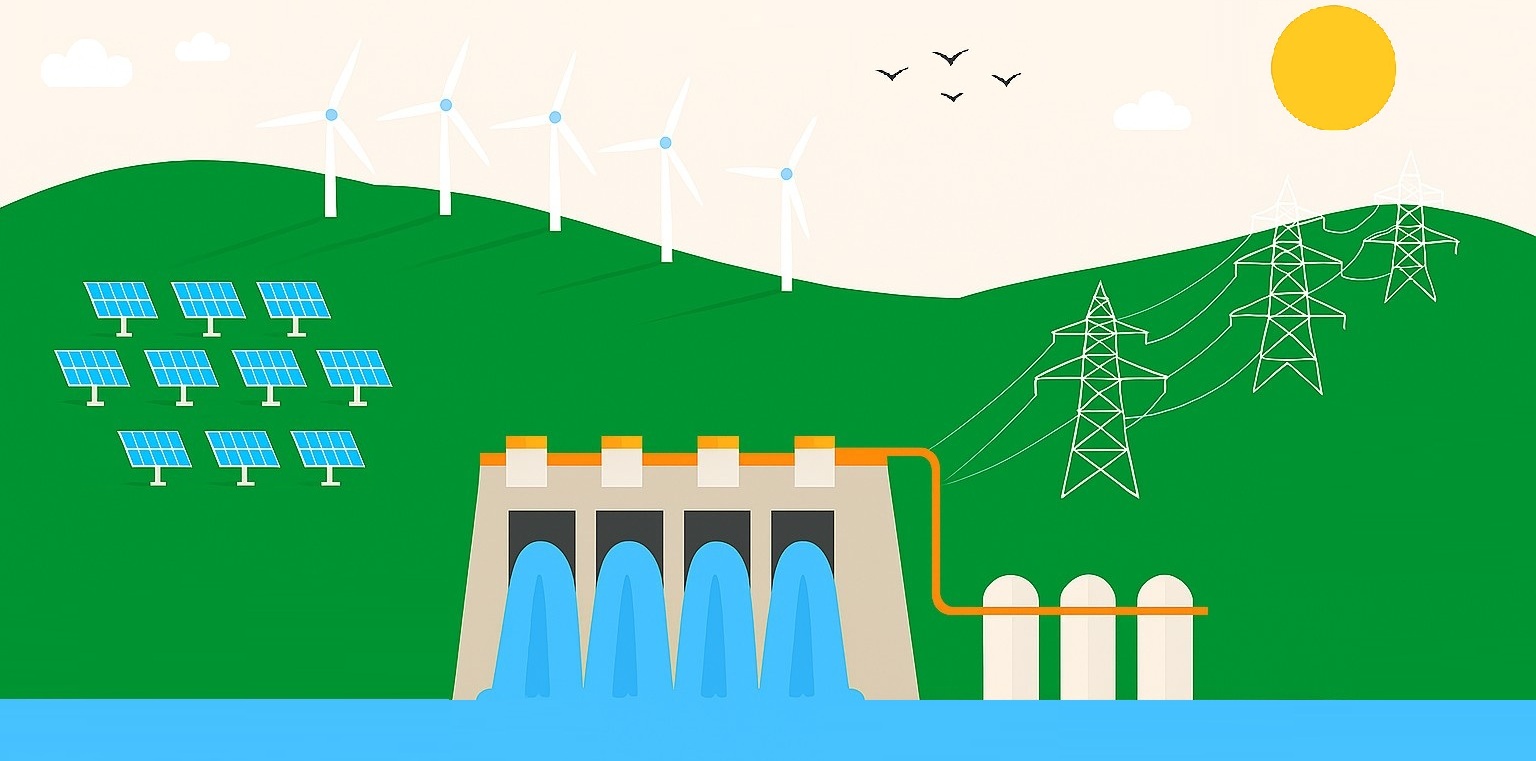

At Adroit Green Energy, combating climate change remains a cornerstone of our mission, a commitment we uphold through our global renewable energy facilities. India has an estimated 103 GW of pumped storage potential. The government is actively promoting PSP's to support the transition to 500 GW of non-fossil fuel capacity by 2030. Several projects are under development to enhance grid reliability and energy storage.

At Adroit Green Energy, we combine decades of proven expertise with forward-thinking innovation to deliver high-impact renewable energy solutions tailored for a global market. Our mission is to drive the transition to clean energy by providing strategic, technically advanced, and financially viable solutions that empower industries and nations toward a greener future.
As specialists in pumped storage hydropower and advanced energy infrastructure, we support governments, industries, and investors in accelerating the shift toward resilient, sustainable energy ecosystems. With a deep understanding of regulatory landscapes and evolving market trends, we help stakeholders navigate complexities, maximize efficiency, and ensure long-term success in clean energy investments.
Our comprehensive consultancy services—from feasibility studies to full-scale project execution and asset management—guarantee efficiency, reliability, and seamless integration into evolving energy grids. Whether operating as Owner’s Engineer, EPC Consultant, or Lender’s Engineer, we design and implement scalable solutions that optimize operational performance, enhance return on investment, and establish future-ready, sustainable energy infrastructure.
Through cutting-edge technology, robust engineering expertise, and strategic foresight, AGES continues to shape the future of clean energy, delivering projects that drive progress, sustainability, and economic resilience in an increasingly interconnected world.
We deliver energy solutions that drive progress across our nation.
India has an estimated 103 GW of pumped storage potential, positioning it as a key player in energy storage solutions for grid stability and renewable integration.
As the country advances toward its ambitious target of 500 GW of non-fossil fuel capacity by 2030, pumped storage projects (PSPs) are gaining momentum as a reliable mechanism to balance intermittent renewable energy sources like solar and wind.

A Pumped Storage System (PSP) is a type of hydroelectric energy storage that helps balance electricity supply and demand. It works by storing excess energy in the form of water pumped to a higher elevation during periods of low demand and releasing it to generate electricity when demand peaks.
How It Works
🔋Charging Phase (Low Demand)
Surplus electricity is used to pump water from a lower reservoir to an upper reservoir.
🪫 Discharging Phase (High Demand)
Water is released from the upper reservoir, flowing down through turbines to generate electricity.
🔁 Closed-Loop vs. Open-Loop
Pumped-storage hydropower plants function as natural batteries in a riverbed, storing energy during periods of low electricity demand by pumping water from a lower reservoir to an upper reservoir. When the demand for electricity increases, water is released downstream, activating the power-generating turbines. This process harnesses gravity and the water cycle, making it a renewable, efficient, and clean energy solution.
The power output of these systems varies depending on factors such as reservoir capacity, waterfall height, and turbine efficiency, ranging from several megawatt-hours (MWh) to gigawatt-hours (GWh) of energy. They represent a remarkable synergy between engineering and nature, offering a sustainable and autonomous energy future.
🔌🏭 Grid Stability : Helps integrate renewable energy sources like solar and wind by storing excess power.
⚡📈 High Efficiency : Can achieve efficiency levels of 70-80%.
♻️🌍 Long Lifespan : Infrastructure can last for decades with proper maintenance.
⚡⏱️ Quick Response : Can ramp up power generation within minutes.